Key Highlights
- Cholesterol is a necessary substance in our body, essential for various bodily functions.
- There are two main types of cholesterol: HDL (good) and LDL (bad).
- High levels of LDL cholesterol can increase the risk of heart disease.
- Lifestyle choices, including diet and exercise, play a significant role in managing cholesterol levels.
- Understanding your cholesterol numbers and discussing them with your healthcare provider is crucial for heart health.
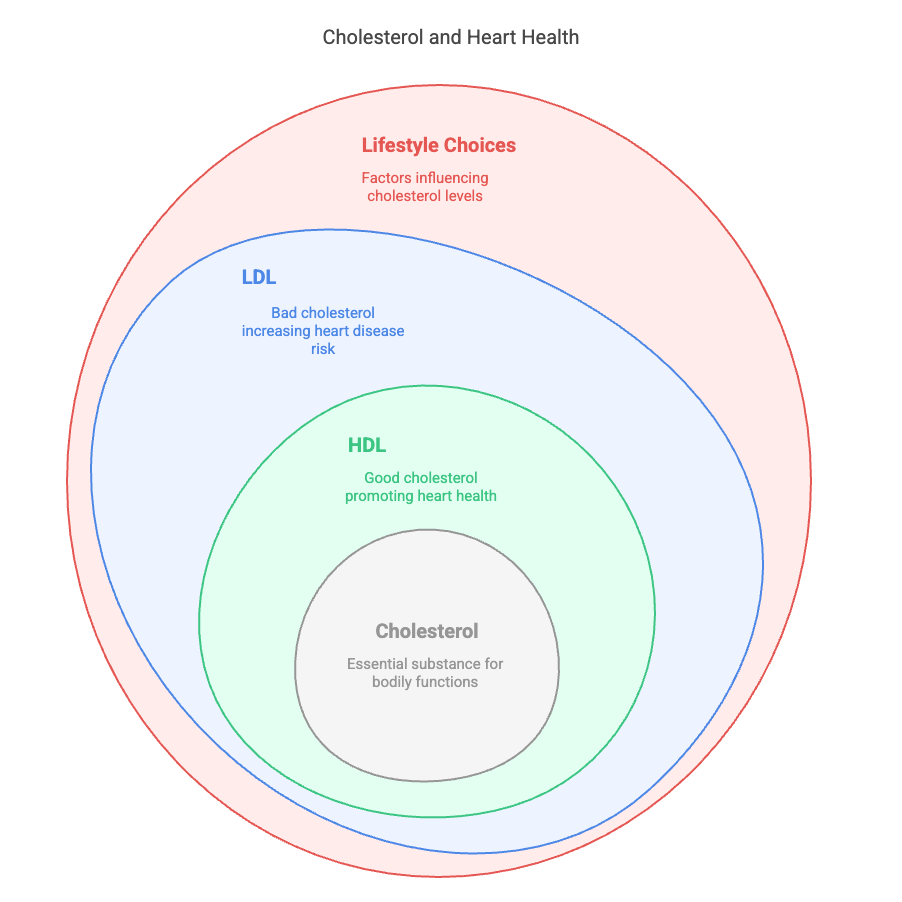
Introduction to Cholesterol
Many people often ask, “Doctor, help me understand what is total cholesterol, HDL cholesterol, VLDL, and LDL cholesterol, and what are the normal ranges for these levels in milligrams of cholesterol per deciliter of blood?” Let’s explore the vital role of cholesterol in our bodies and decipher these terms that frequently appear on our health reports.
Cholesterol’s Role in the Body
Cholesterol is crucial for several bodily functions, including maintaining cell membranes, producing hormones, synthesizing vitamin D, and aiding digestion. Imagine the body as a bustling city with freeways representing large arteries branching into smaller roads or tiny capillaries. These smaller vessels serve as the pathways enabling cholesterol to move throughout the body, akin to a city’s infrastructure.
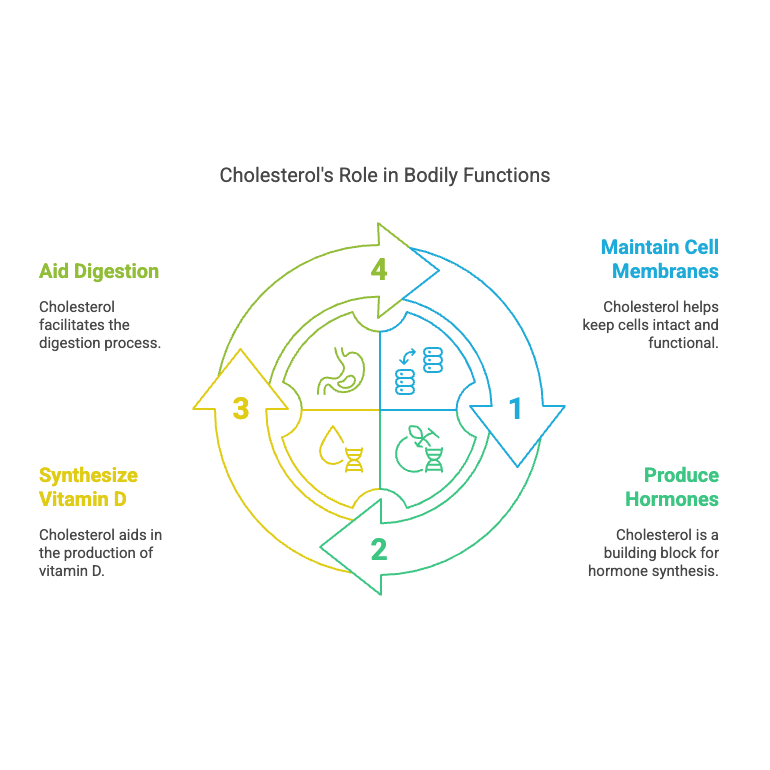
Understanding Cholesterol Production
The liver is primarily responsible for producing cholesterol, contributing approximately 80% of it while the rest comes from dietary sources. The initial product released by the liver is VLDL (very low-density lipoprotein), an insoluble fat in water. This cholesterol gets transported via lipoproteins, akin to vehicles carrying cargo. These vehicles transport both cholesterol and fats across the vascular system.
The Journey of Cholesterol in the Body
As VLDL cholesterol travels through the bloodstream, it sheds cholesterol, transforming into LDL cholesterol. This conversion results in particles that linger in circulation, potentially leading to a higher risk of penetrating deeper into blood vessels. When the number of these particles becomes excessive, issues arise, leading to traffic-like congestion (or accidents) in the bloodstream.
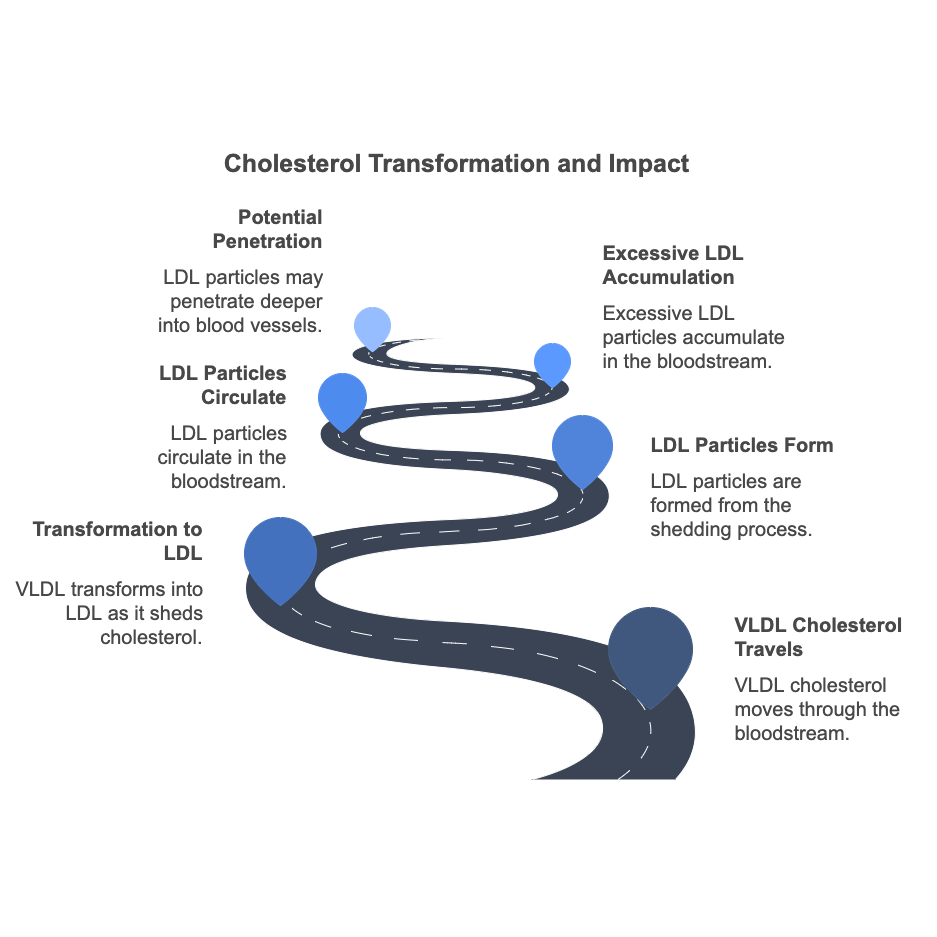
Formation of Plaque in Arteries
The excessive LDL cholesterol can seep between endothelial cells, initiating an inflammatory response. Macrophages engulf oxidized cholesterol, turning into foam cells. As these cells accumulate, they can form plaque. When such plaque stabilizes, it aids in artery repair. However, unstable plaque risks rupturing, potentially attracting platelets that form blood clots, which can contribute to conditions like peripheral artery disease, narrowing arteries further.
HDL vs LDL Cholesterol
The liver also produces HDL cholesterol, acting as a tow truck that clears debris and returns excess cholesterol to the liver for recycling or destruction. Thus, while LDL cholesterol can contribute to plaque formation, HDL helps remove this risk factor from circulation. Total cholesterol reflects all cholesterol carried by VLDL, ILDL, and LDL, while HDL shows how much is being cleaned up.
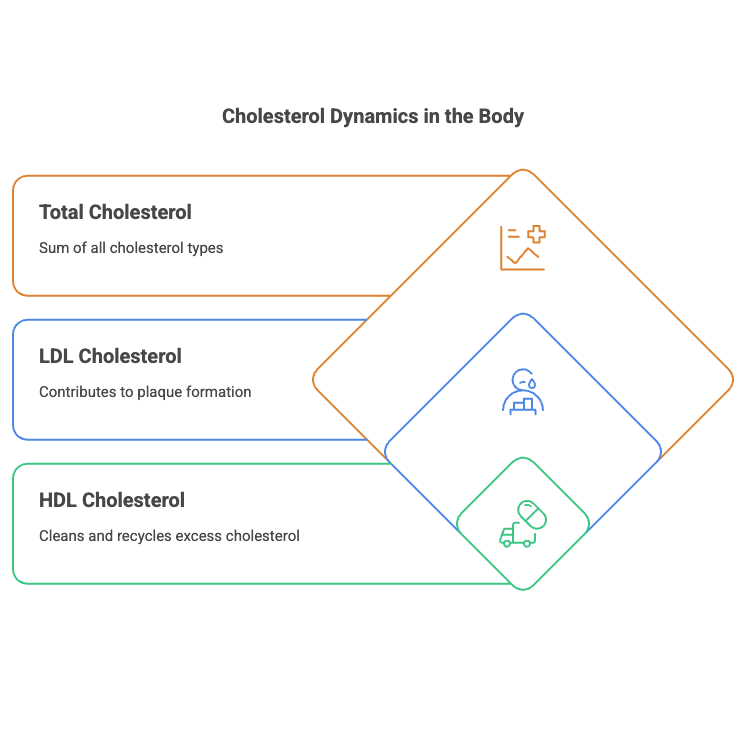
Measuring Cholesterol Levels
Blood tests typically measure total cholesterol, triglyceride levels, and LDL. HDL levels are inferred mathematically based on triglyceride levels and LDL cholesterol. However, advanced markers like ApoB and ApoA1 can provide deeper insights as part of a lipid panel or lipid profile. ApoB indicates the quantity and quality of bad cholesterol-carrying vehicles, while ApoA1 represents HDL’s role, offering a clearer picture of cardiovascular risk.
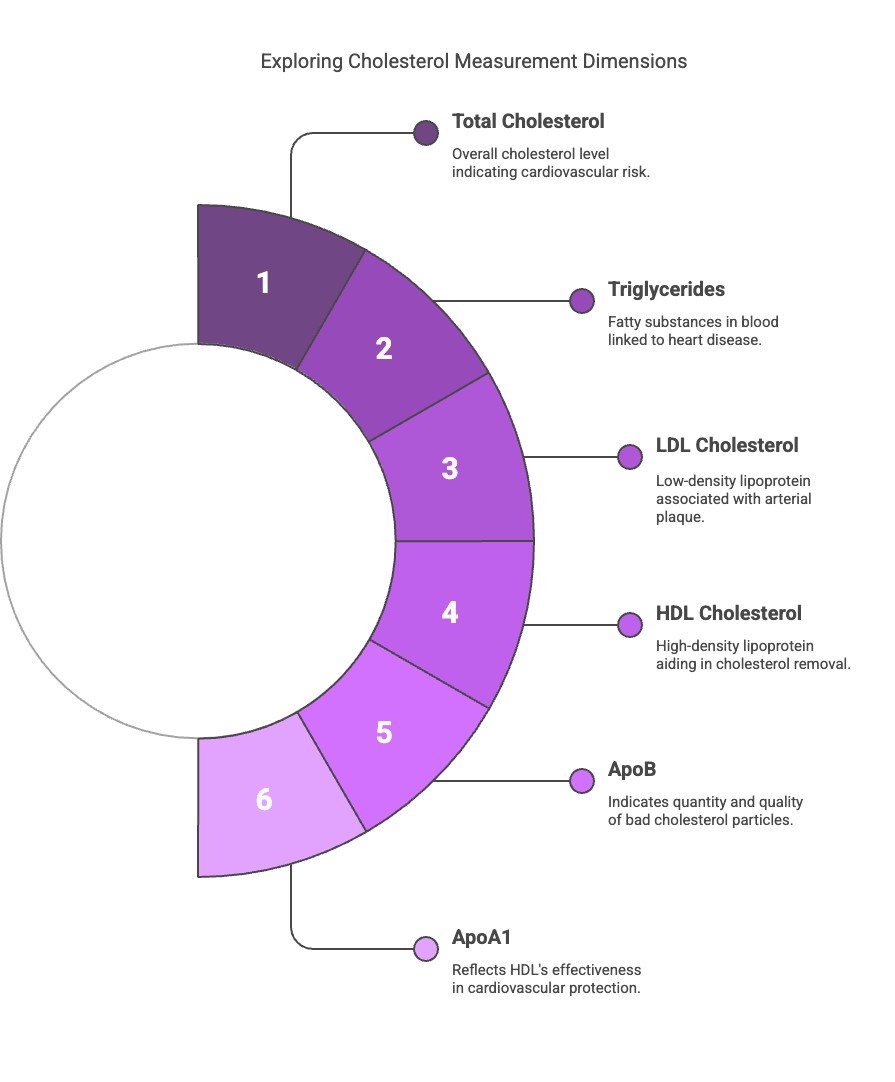
Clinical Implications and Recommendations
Regular cholesterol check-ups may often overlook ApoB and ApoA1 markers due to practical constraints. However, for individuals at high risk or with existing cardiovascular conditions, these markers offer valuable insight into tailoring cholesterol treatments. Discussing these tests with your physician could guide more precise and effective cholesterol management strategies.
Conclusion
Understanding the nuances of cholesterol and its measurement helps in making informed health decisions. While total cholesterol levels are significant, knowing the details—like the roles of HDL, LDL, and additional markers—can empower individuals to take preventive steps toward optimal cardiovascular health. Thank you for reading, and stay tuned for more insights in our next installment. Frequently Asked Questions.
What is the difference between ‘good’ and ‘bad’ cholesterol?
HDL cholesterol, known as “good” cholesterol, helps get rid of extra cholesterol in the blood, including high HDL cholesterol levels. This can lower the risk of heart disease. On the other hand, high LDL cholesterol levels, referred to as “bad” cholesterol, can gather in arteries, making it important to monitor your LDL level. This buildup can increase the risk of heart problems.
How often should I check my cholesterol levels?
It’s a good idea for healthy adults to talk about how often you need cholesterol tests with your healthcare provider, especially if you have a family history of heart disease or other health conditions. They can give you advice that’s just right for you. This advice depends on your age, risk factors, and overall health. It’s important to follow general guidelines and to talk about your test results with your healthcare provider, especially if you have high cholesterol.


